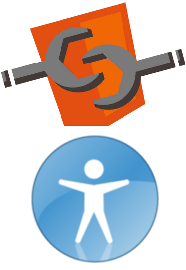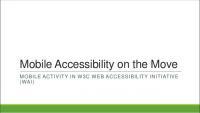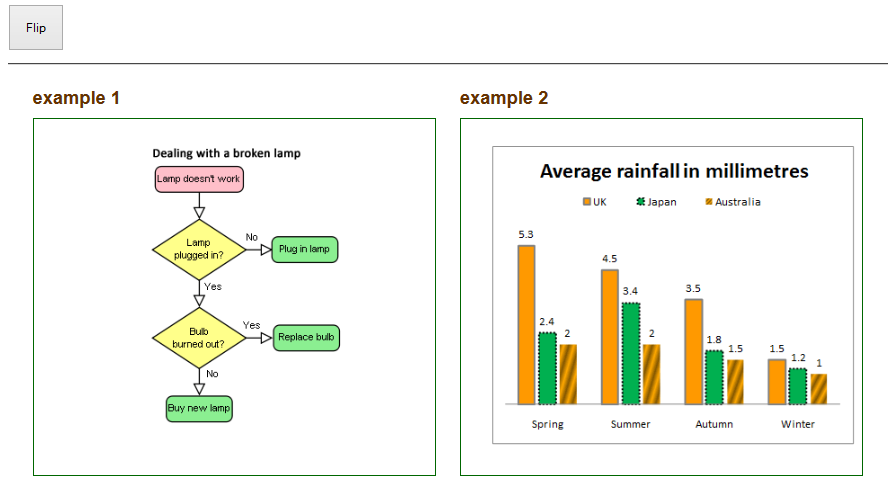filing bugs
One of the ways to get things fixed in browsers, or at least understand why things aren’t/won’t be fixed, is to file a bug. I spend a fair…
The latest in accessibility law, strategy, program management, and news, as well as upcoming events, and articles on web development issues, techniques, design patterns, auditing, WCAG, and resources of a technical nature.

One of the ways to get things fixed in browsers, or at least understand why things aren’t/won’t be fixed, is to file a bug. I spend a fair…
June 29, 2014 | Technical
We spend an increasing amount of time helping organizations develop a culture and practice of accessible user experience (AUX). We believe that digital resources and experiences are more effective and…
June 26, 2014 | Technical

While other mobile platforms are making strides in accessibility, iOS has always been a clear leader. Given the buzz from this year’s annual developer conference, iOS 8 will deliver again….
June 25, 2014 | World of Accessibility

Web components are the next step in building modern web applications and a great way to prototype accessible widgets. Today we are going to build a disclosure widget, by extending…
June 24, 2014 | Technical

I have been testing and tracking browser accessibility implementation support for a range of new HTML features since 2010. Data can be found on HTML5accessibility.com. Over the last week I…
June 18, 2014 | Technical

Back in 2010 I filed a bug on Internet Explorer about its lack of support for exposing the calculated values of aria-labelledby and aria-describedby in the MSAA accessibility API. After…
June 10, 2014 | Technical
Dear Friends and Colleagues – One week ago, in celebration of Global Accessibility Awareness Day (GAAD), TPGi with support from YOU and our co-sponsors, Adobe Systems Inc., pulled off one…
May 23, 2014 | Technical

I’ve spent more than twenty years developing applications and websites. That’s a lot of time spent sitting in a cubicle, head down, coding, and racing toward deadlines to make the…
May 16, 2014 | World of Accessibility

Cedric Trevisan and I have been cooking up a simple custom element, web component (using polymer) that provides a flexible disclosure control with accessibility baked in. It’s still in progress…
May 2, 2014 | Technical

Even though WCAG 2.0 was written before smartphones put mobile accessibility in the public eye, WCAG 2.0 was written to be forward-thinking and has proved to be so. During this…
April 19, 2014 | World of Accessibility
I am non-verbal, and one of the reasons that I haven’t been fond of voice synthesizers is that the synthesized voice never sounds like mine. Yes, although I cannot verbalize,…
April 18, 2014 | World of Accessibility
TPG’s Accessible User Experience team recently did some work for a client exploring legislation and standards on digital accessibility in selected countries around the world, and their impact on defining…
April 16, 2014 | Technical
It is no longer a WCAG 2.0 conformance failure to have an <img> without an alt attribute, as long as the img element has an accessible name provided using another…
April 14, 2014 | Technical
Over the last two years I’ve been dabbling with various aspects related to the handling of touch events and pointer events – specifically trying to determine which events are being…
April 10, 2014 | Technical

Ola Mundo is a project established in early 2012 in Israel by parents of children with special needs aimed to meet a need that had been very challenging to them until…
April 9, 2014 | World of Accessibility
At TPGi we are committed to advancing accessibility, and we look for ways to drive innovation and change in the way accessibility is approached and implemented. Laws and policies are…
April 9, 2014 | Technical

A discussion on the WHATWG list about the limitations/issues with the current design of the summary and details elements, brought forth the following comment:
April 7, 2014 | Technical
Attention to accessibility usually comes into play in the later phases of product development. Accessibility audits are typically performed during quality assurance and user acceptance testing phases. Remediation for any issues identified in the audit usually happens in code. However, the best fix for many complex accessibility issues may be to revisit the overall design approach; yet reworking designs at this late phase has a significant impact on timelines and processes. Any recommendation involving alternative designs is therefore usually unwelcome. Instead, the issues remain unresolved, or are resolved in a fashion that achieves technical accessibility but offers a compromised user experience.
The best approach to accessible user experience is to integrate accessibility into the design and development process. When accessibility is part of the practice of every member of the product development team, and when accessible features and functionality are built into design, content, and code, the result is a product that is accessible and enjoyable for everyone.
March 31, 2014 | Technical, User Experience (UX)